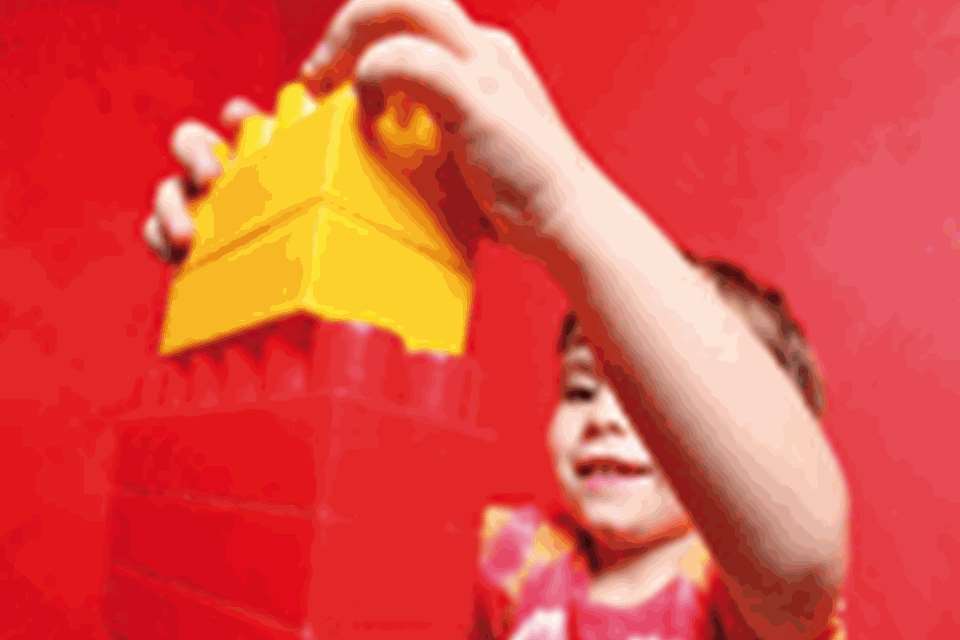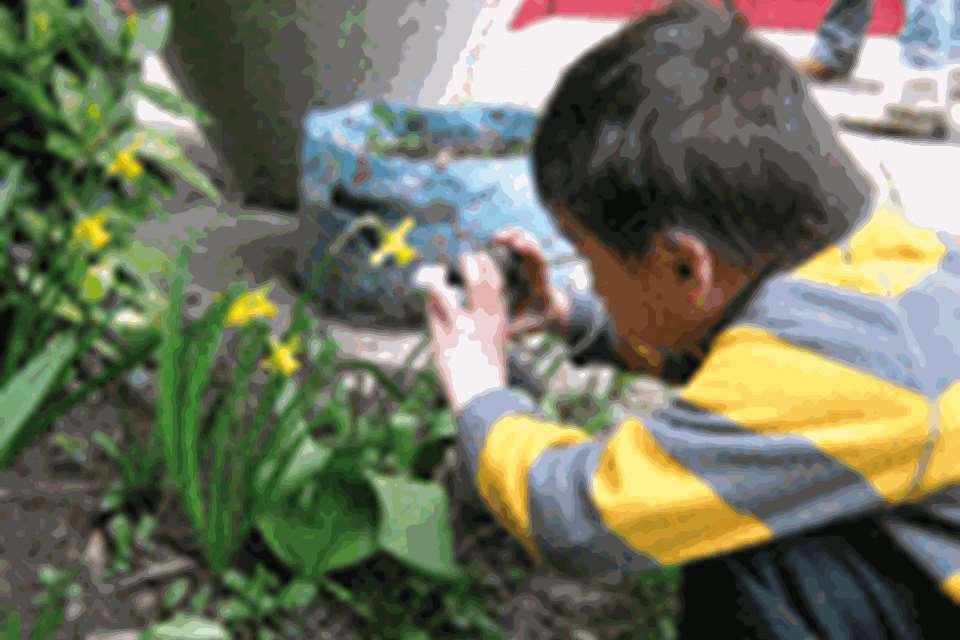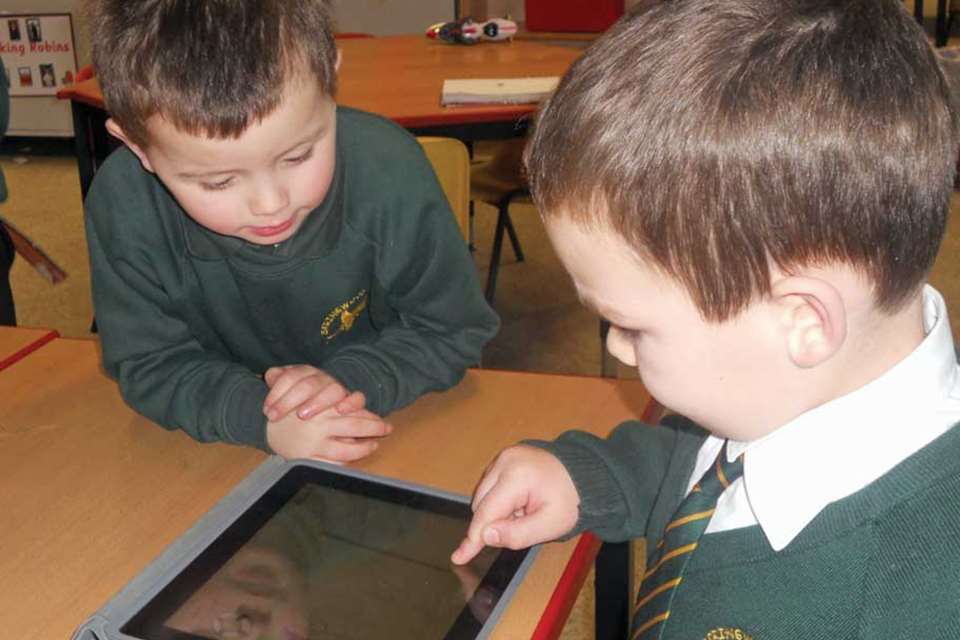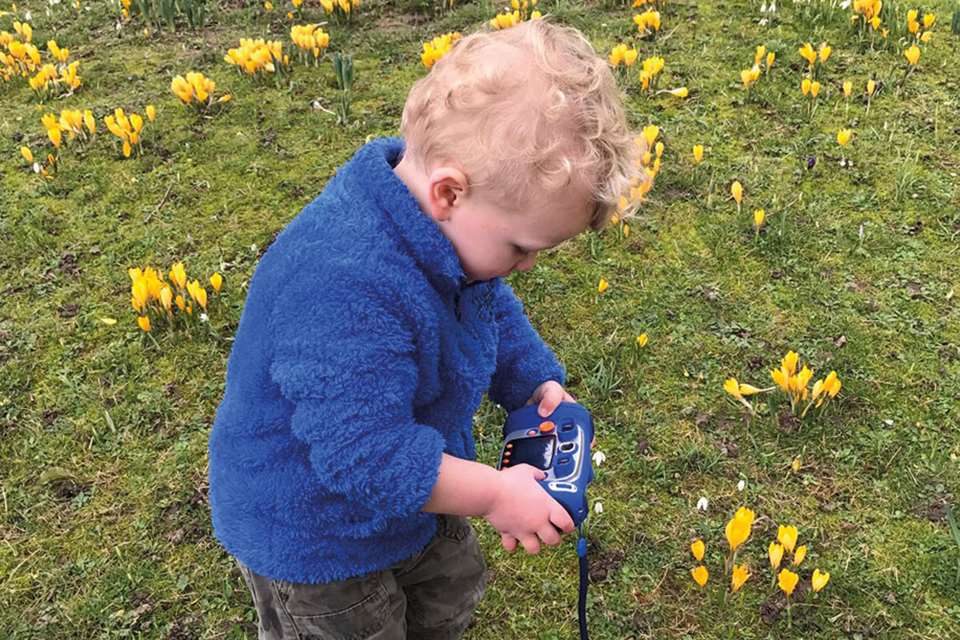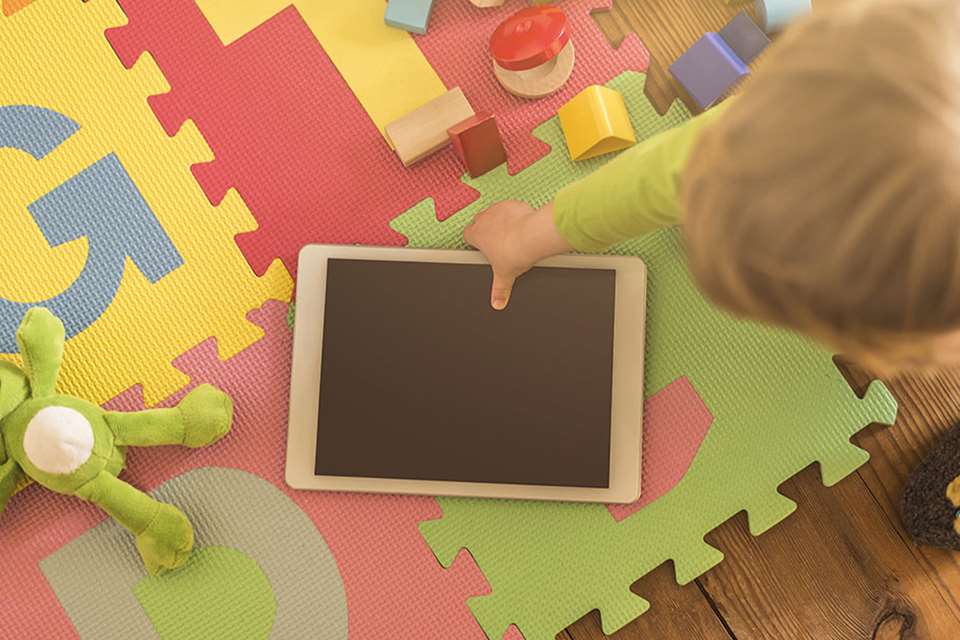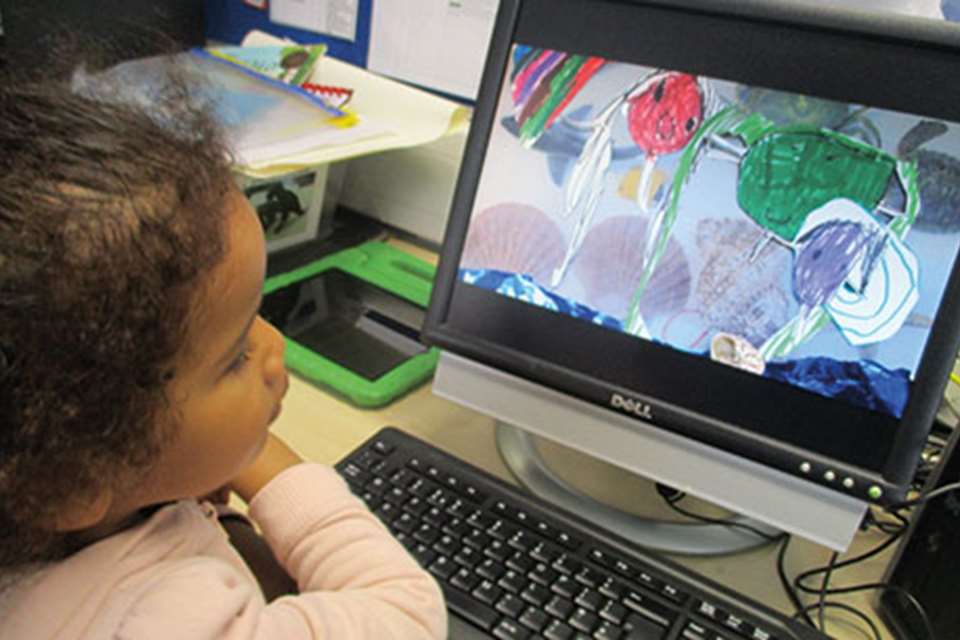Learning & Development: Digital Technology - Into focus
Nicola Turner, Eloise Robinson and Camilla Alton
Monday, March 5, 2018
Children at Balham Nursery School embraced digital technology and used it to work together on creative projects. By deputy head Nicola Turner, artist educator Eloise Robinson and SENCO Camilla Alton
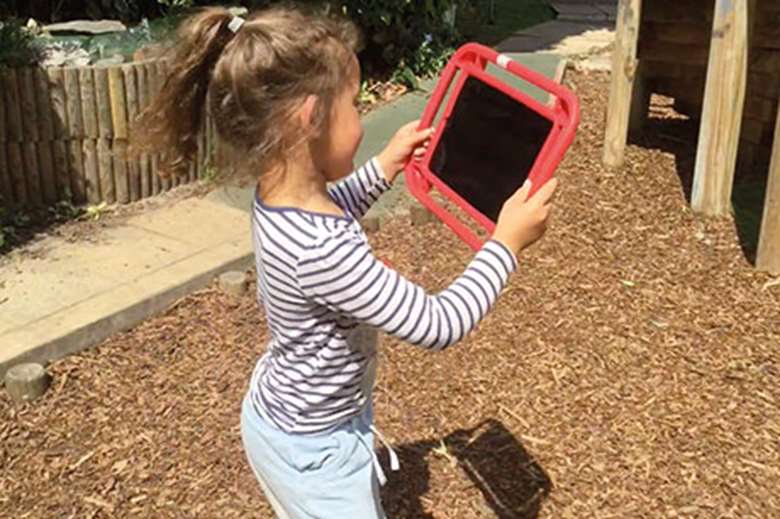
Download the PDF of Digital technology - Into Focus
Digital technology can be viewed with trepidation by early years practitioners concerned that it is a solitary activity which often has fixed outcomes and stops children from having ‘real’ experiences. But at Balham Nursery School, in south London, we were inspired by schools that follow Reggio Emilia’s creative approach and have been exploring digital technology. We wanted to see if we could use technology in a creative, collaborative way too.
Over a few years, we have gradually progressed from using children’s cameras to filming on iPads and experimenting with apps. We’ve found that digital technology can be used positively in children’s play to support investigations, highlight fascinations and stimulate conversations, and people attending our end-of-year exhibitions have commented on how ‘complex’ the children’s work is.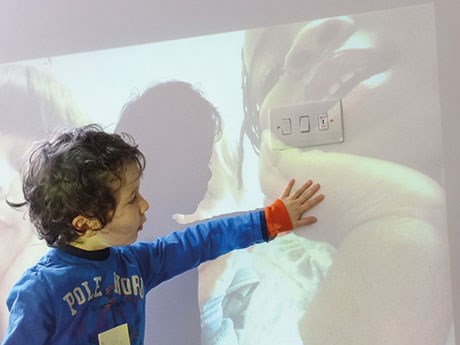
PHOTOGRAPHY
Attending a Sightlines Initiative event on photography introduced us to the benefits of using ‘adult’ cameras with children, instead of ones designed specifically for children. As well as being easy to use, the adult cameras have a larger viewfinder. Gradually we passed control to the children and now most of our three- and four-year-olds are independent in the process of taking and printing their own photographs.
Inviting a professional photographer into the nursery for a day was fascinating. We asked him to follow the children’s lines of enquiry. Some were entranced by the technology itself – the long lenses and shutter speed – while others were drawn to the idea of recording their ideas, favourite places, physical skills and movements.
One child, who spent much of his time locked in his own world, gave us a powerful example of how photography offers children another perspective and a new language with which to explore and express their ideas. He followed the photographer around for some time, clearly curious, and finally began pointing out things around our garden, instructing the photographer to take photos. Eventually, he accepted the offer to use the camera himself. When we revisited his photographs, his face lit up and he ran to the places where they had been taken. For the remainder of his time at nursery, he used photography as a means of expression.
We decided to hold an end-of-year exhibition of the children’s photography and the children edited their work by selecting which photos to display on an A4 sheet. Some chose one large picture, while others went for many small ones. This process made us realise just how important reflection is and we learnt a lot about the children’s thinking as they made choices about their photographs. Giving children time for reflecting on ideas, experiences and learning is now fixed in our practice. It is a very powerful tool for their metacognition.
VIDEO
The use of digital cameras became embedded in the nursery when we decided to gradually introduce iPads to explore how children could use film. Rather than have a specific outcome in mind, we allowed the children to experiment with the video function and wondered if they would use the moving image differently to static images.
We documented their explorations with a camera to see what they were doing, instead of focusing solely on the films they made. This helped us to understand the children’s thinking and we discovered several emerging themes:
Movement
Exploiting the movement element of film seems instinctive. Children moved the iPad from side to side, ran with it, spun in circles and made it look up and down. They quickly discovered the screen rotation and fast-forward functions, and loved looking back at their films and instantly tried to recreate or adapt them. McKenzie watched his film and commented, ‘It make me dizzy.’
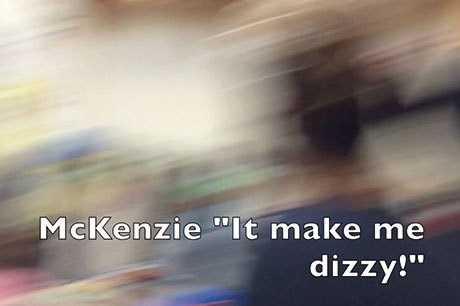
Selfies
Many children interacted with their own image. They spent time testing their ideas, moving in and out of shot to see what happened before replaying the film and repeating their moves. Children often did this in groups, watching and reacting to each other’s images and expressions.
Storytelling and performance
Through the children’s films, we discovered an emerging story involving a wolf at the end of the garden. The children tried to wake up the wolf and then ran away from it, and a few filmed themselves looking for the wolf. You can see their feet and the ground as they move around the garden and hear them whispering as they try not to wake the wolf.
We played these films to the wider group to involve them in the story. Some children then filmed themselves telling the story of the wolf. Diana narrated, ‘Once upon a time the wolf was scraping off in the forest, he was chasing us in the forest then he went back to sleep.’ We encouraged the children involved in the story to draw what they thought the wolf looked like and maps of where it was hiding.
Copying and imitating
We set up a static iPad in a box pointing at a stage made of blocks and a fascinating group exploration emerged when children, who wouldn’t normally work together, experimented filming themselves.
Henry made a film of a rotating plastic tiger and then filmed himself turning around on the stage saying, ‘I can do it all by myself!’ Children watched Henry and then viewed the film with him. One boy observed, ‘One Henry on film and one in real life!’ Henry then began to copy with amazing accuracy his movements on the film as it was playing. Other children joined in copying and mirroring the film.
This exploration shows how in tune the children were with the film and how important instant playback is for them, along with highlighting their ability to immediately link technology to their physical experiences. It is evident that the children were playing with concepts such as real/unreal and physical/virtual and testing the areas in-between.
DIGITAL GRAPHICS
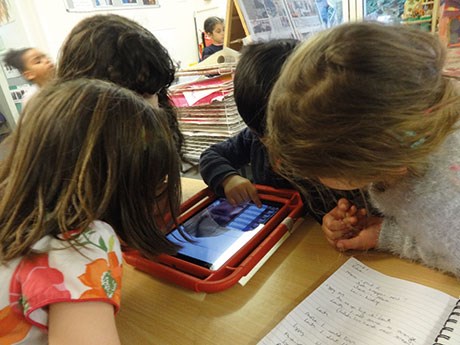
We used iPads from the start of the last academic year to enable the children to support their play, revisit ideas and stimulate investigation and conversation. We were also keen to find open-ended apps that supported collaboration.
The Artset app, which enables the user to import photos and add to them with mark-making tools, was ideal for supporting the imaginative play happening in the garden. We captured the children’s play and re-presented it to them as images they could draw over.
We had previously done this by laying acetate over photos, allowing children to revisit experiences and layer their ideas. Doing this digitally offered further opportunities, such as playing with scale and the idea of permanence or reversal of changes.
Scarlett looking at her drawing on a photo of the garden commented, ‘Let’s print it and put it in the garden. I made the whole world gold. Can we make the whole world like this? Maybe if we put the picture in a rocket and it will go boom all over the garden.’
Many children were interested in their own image so we also imported their self-portraits into Artset for them to draw over.
We wanted to record children drawing in real time and play it back so they could see it developing and retell the story that they were drawing. We managed to do this by connecting the iPad to an Apple Mac and recording the screen through QuickTime Player, but our children were not as interested in watching the drawings being played back as we’d hoped. They were far more interested in drawing in the moment – highlighting the importance of listening to and learning from children. So, we researched how to give them more opportunities to engage with their drawings ‘live’. We discovered that connecting the iPad directly to the projector enabled children to draw on the iPad and instantly show the results on the screen.
Children quickly realised that they could be ‘inside’ the drawing by standing in front of the screen. Children drawing on the iPad found they could manipulate the images on the screen and make them interact with their friends in the projected image. This created a wonderful group experience that enhanced and enriched their natural storytelling.
Children influenced each other and adapted and led their play, such as when Tim was drawing a dinosaur: Edith at the screen suggested he put a circle around it ‘like a jail’. Tim exclaimed, ‘Look, the dinosaur is in jail!’ and Edith then pretended to climb out of the jail.
We added landscape photos to the Artset app so the children could elaborate the stories that they were drawing. Arthur liked using the app’s paintbrush effect to cover the whole screen. He drew over a forest picture and said, ‘It’s getting dark again and bears coming…eating children up’, before using a light colour and saying, ‘It’s getting sunnier soon’, meaning the bears had gone away. Tim and Jemima listened to his story and joined in by standing in the light, stomping and making bear noises. They were interacting with technology and each other while finding their own way to create and tell a story.
Using Artset with the iPads allowed the children to develop their ideas and stories and enabled a wider group to access the experience – from those who drew, or became storytellers, performers or directors, to those who observed.
For the end-of-year exhibition, we collected and printed all the relevant photos, digital drawings and screenshots of videos for each child. The children then edited the photos, presented them as they wanted, added drawings and told us what story or comments they wanted us to write. This process highlighted their individual thinking, fascinations and stories – from Arthur’s bear that fell in love and didn’t come back to Jemima’s story of a baddy trapping a queen in a ball.
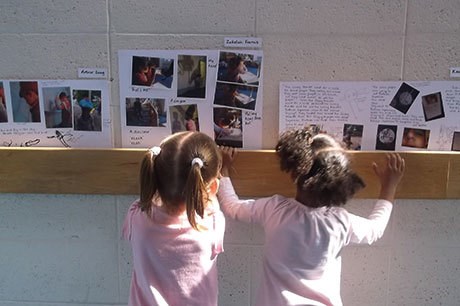
The younger nursery children explored Photobooth on the iPad. The photos created were then printed so that they could draw their response to them. We’ve found that the youngest and eldest children typically interact with technology differently. Younger children are more likely to engage in a solitary exploration of cause and effect or stand back and watch a group of older children engaging with the technology. The older children are more likely to use the technology to interact with one another and explore storytelling, with us observing them to respond frequently to one another through the technology and develop collaborative narrative.
NEXT STEPS
We took a risk introducing the iPads because we didn’t know how the children would use them and what the effect or outcome would be. By listening and observing closely what the children are saying and doing, we have discovered the potential of iPads and used this to enrich the children’s experiences. The technology is enabling us to represent children’s ideas and interests to them in different ways, allowing a great deal of layering of explorations. This is supporting them to reflect on and modify both their practical experiences and thinking.
We are now planning on rearranging provision to provide a more dedicated space for the projector. We’d like to invest in a digital microscope and Wi-Fi across the nursery building and garden to enable us to further support children’s investigations. There are more apps for us to explore – particularly Bloom and MadPad – and we’d like to introduce coding skills through ScratchJr. We still need to work out how best to use video footage with the children and how to further involve them in the annual end-of-year exhibition.
The process will continue to evolve as children come and go, staff knowledge and confidence increases and technology changes.
OUR TIPS
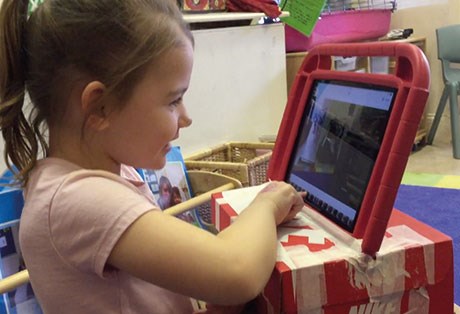
- Children are extremely competent users of technology. Value their expertise.
- The camera on an iPad is offset, which can create difficulty when children instinctively point it straight ahead and can’t see what they expect on the screen. We developed a box to stand the iPad in front of a ‘stage’ of blocks so children know where to place objects for filming.
- Video footage takes much longer to edit than photographs so time is needed both for editing and, importantly, reflecting on key aspects to further support children.
- Use a camera or iPad yourself to capture what the children are doing and use iPad screenshots to take images of children’s drawings throughout the process.
- Link an iPad to a projector to support larger-scale group work – via a laptop or straight into a projector if you have a Digital AV or VGA adapter cable.
- Open-ended apps and programs include Artset, Bloom, MadPad, ScratchJr, Photobooth and QuickTime Player.
- We have Canon SELPHY compact photo printers that children can use independently.
- Create opportunities where you re-present children’s ideas to them to support reflection.
- It takes time, effort and training to embed new technology so that it becomes a part of the nursery culture with which all staff are comfortable and confident.
- Focus on the process, not the results.
- Give it a go!
MORE INFORMATION
Reggio Emilia approach, www.reggiochildren.it
Balham Nursery School and Children’s Centre, https://balham-nursery.wandsworth.sch.uk


